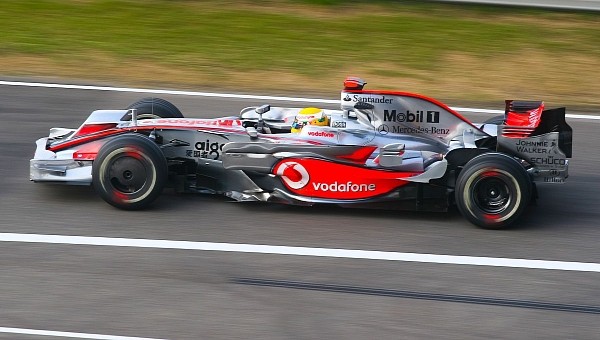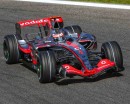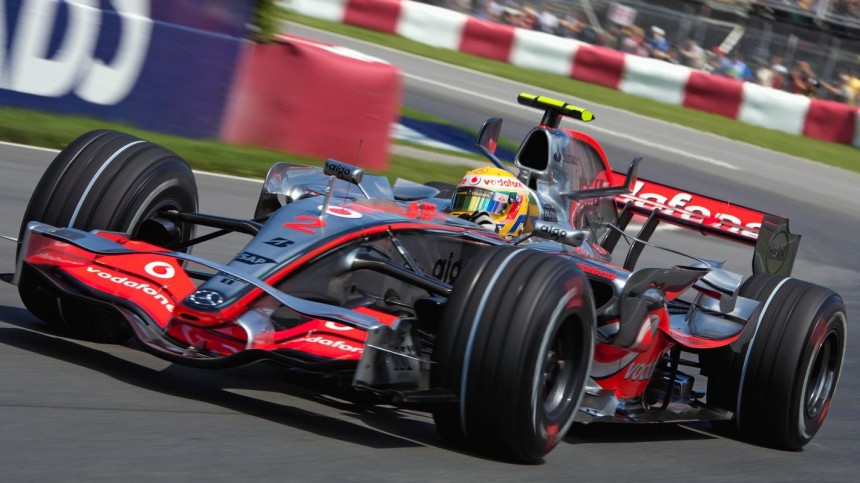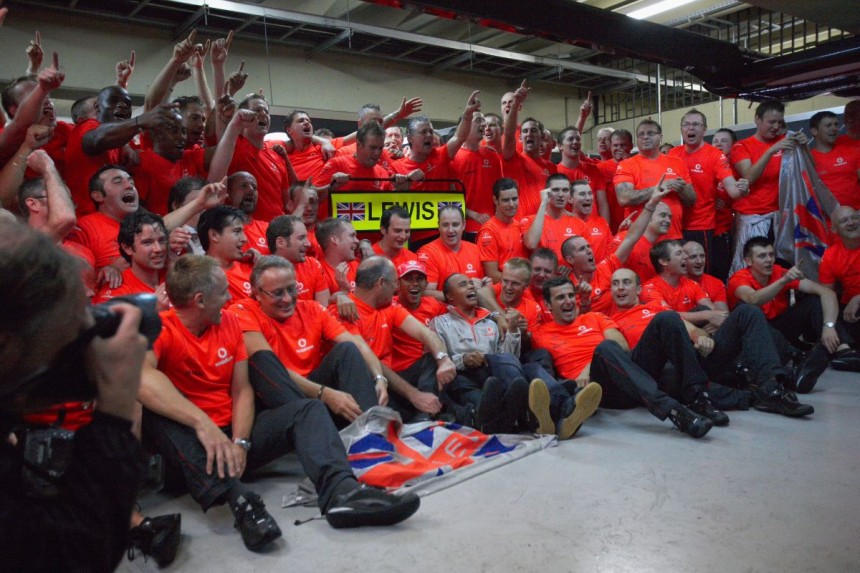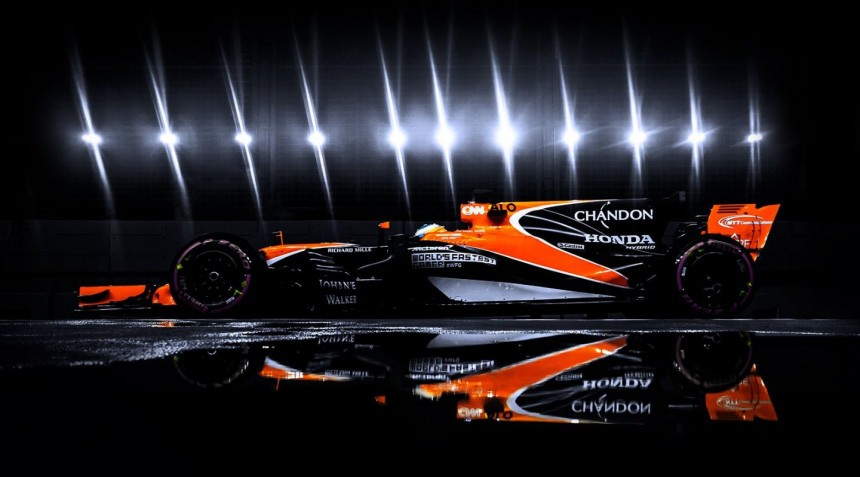For the 2022 Formula 1 season, McLaren and Mercedes were back together in this competition after spending six years apart. They have a love story just like two high school teenagers would have.
Still, the partnership is nothing like the original alliance, which dates all the way back to 1995. That relationship involved a works engine supplier, with Mercedes owning 40% of the team as the parent company. In comparison, in 2022 and the following season, McLaren will be purely a power unit customer, recovering from that disastrous Honda partnership that started in 2014. However, in the meantime, they found an escape route with limited potential in Renault. In addition, because the deal signed last year doesn't involve McLaren buying its engines, the Mercedes logo will not be present for 2023 on the F1 car like some years ago.
Over the 20 seasons Mercedes and McLaren spent together in their first stint, they were on the top of the world. So, where it all went wrong, and after what we saw in the 2022 F1 season, could this alliance go back to the elite tier? It's crazy to think that if it weren't for some key moments between 2007 and 2009, the McLaren-Mercedes partnership would have never ended, and the German manufacturer would probably not have entered F1 with their own works team. Let's get right into it.
Before anything, let's see how the partnership started. In the 1995 F1 season, McLaren ended their engine deal with them and started an engine full-works partnership with Mercedes-Benz. That happened right after the German automaker gave up on the agreement with the Sauber team. The alliance included free engines from Mercedes built and assembled by Ilmor Engineering, financial help, and Daimler's full support, which provided them with Mercedes and Ilmor staff members to work directly at the Woking base.
Until 1997, the British team did not achieve any wins since the beginning of the alliance with the German manufacturer. But in that season, David Coulthard achieved his first-ever victory at the Australian Grand Prix, which was the first race of that year. From that moment, things went better and better, and in 1998 and 1999, Mika Hakkinen beat Michael Schumacher in both seasons to win the Drivers' Championship. Until 2008, McLaren always had great cars, but between 2000 and 2004, the absolute domination of F1 by Ferrari and Schumacher came up. After that, Fernando Alonso amazed everyone with Renault for two years, while in 2007, Kimi Raikkonen won the championship by only one point ahead of Alonso and Hamilton. McLaren would have much more titles if luck were more on their side.
Everything started with the $100 million Spygate saga, where McLaren was accused of possessing confidential information about Ferrari's car in 2007. In addition, the relationship between the British team boss Ron Dennis and FIA (Fédération Internationale de l'Automobile) president Max Mosley was always uneasy, clashing and making each other's life difficult. So when it was discovered that an engineer from Ferrari gave McLaren's chief designer some essential and confidential information, Max Mosley stepped in. Besides the massive fine, the British team was stripped of its Constructors' Championship points, costing them a title.
The implication behind the punishment was that McLaren could consider itself extremely lucky not to be thrown out of the competition entirely. Because of its 40% shareholding in the team, Daimler (the parent company of Mercedes) was liable for $40 million of the $100 million fine. Of course, this didn't sit well with a company that had such an enormous reputation for being mindful of. As a result, that became part of ongoing tension between the two sides. Besides, Alonso wanted to take all this private information to the FIA after a fight with the team. Maybe that's why he stayed only one year at McLaren, returning to Renault in 2008.
McLaren and Mercedes even worked together to release one of the best supercars ever. Ok, I might say that because it is one of my favorite cars and I had the chance to ride in one when I was little. Of course, I am talking about the SLR McLaren. However, many years later, the British automaker decided to enter the supercars market with the model MP4-12C, a direct attack on the Mercedes SLS AMG. Of course Daimler board members were very unhappy with this decision, so things declined even more between the two entities.
Max Mosley was known for being against all the manufacturers that dominated F1. He was trying to reduce the power of the automakers by creating specific rules that favored independent teams, while the car manufacturers were trying to do the opposite. Mosley was attempting some political ways to make everyone equal, but on the other hand, the car makers were trying to do the opposite. They wanted more money and more control, so they made multiple threats to break away and form their own motorsport competition to rival Formula 1.
The breakaway threats led to the creation of the Formula 1 Teams Association (FOTA). The group managed to attract the independent squads to join on the promise of more money for everyone, saying that while they were in charge of the revenues, the commercial rights holder won't take his colossal cut. That's how things were going under the leadership of Bernie Ecclestone. After all those promises, the 2008 financial crash hit hard, and almost immediately, Honda decided to retire the F1 team because it cost the company $300 million yearly.
As a result, Ross Brawn went into this rampage mode in order to save the team in the winter of 2008-09. Honda would supply a running budget of 100 million dollars if they pulled it off, but that's it. No power unit delivery, no nothing. At this moment, McLaren's Chief Executive Officer and leader of FOTA, Martin Whitmarsh, waved McLaren's veto over Mercedes supplying another squad. At that time, this decision didn't seem that high risk. After all, the British team had just won the championship with Lewis Hamilton in 2008.
Brawn GP was believed to have an impressive and excellent car developed with financial help from Honda. However, this team was battling to get on the grid, so they had to downsize a lot to ensure they could complete the season. Whitmarsh didn't realize at that time that this was the crucial moment that would doom McLaren for a very long time. Still, there were even more actions that would make the split inevitable.
The British team's fate was sealed in the early months of 2009. Besides the fact that the Brawn car was absolutely destroying the competition, especially with the help of their genius innovation, the double diffuser, and the best power unit in F1 (Mercedes), McLaren's new car was awful. The development focus required towards the end of the 2008 title showdown with Ferrari and Felipe Massa meant McLaren and Ferrari headed into F1's new rules for 2009 undercooked. It wasn't until the mid-season upgrade that McLaren started to save some respectability. Besides Brawn, Williams, and Toyota, everyone missed the double diffuser trend, so they called the FIA, saying that the innovation was illegal. However, Max Mosley ruled it was legal, so his fight against the big teams was definitely a success.
At this time, Ron Dennis had already handed over the team boss role at McLaren to Whitmarsh. However, Martin stepped away from this position just a few weeks later, when the British team was caught up in another scandal at the Australian Grand Prix. McLaren was given only a suspended ban, but another incident worsened Mercedes' view of McLaren and added to its concerns. After that, in late 2009, the German company bought Brawn GP, and Mercedes' equity in McLaren would be sold over the next two years.
The British team retained a Mercedes power unit supply, but it had gone from being a once exclusive works partner to simply a customer. And the decision of Whitmarsh was definitely a crucial one. In the beginning, McLaren enjoyed a competitive edge over the works Mercedes team. From 2010 to 2012, the British squad won 18 races, while the German team only won one. After a year of under-investment, Mercedes understood that Brawn GP wasn't quite the ready-made title-winning machine it thought initially. Besides, the Germans believed that F1 would go through a severe cost-cutting era, but as it turned out, they were wrong. More spending power from Germany was required. And that's just what happened.
As a result, Mercedes started to take F1 extremely seriously. In 2013, they won three races, with Nico Rosberg taking two victories and Lewis Hamilton one. Then, in 2014, Mercedes got the new 1.6-liter turbo hybrid engine regulations perfect, dominating Formula 1 from that point until 2021. In 2014, McLaren had the advantage of still using the best power unit, but its car fell short and, as a customer, will never enjoy the same sort of chassis engine integration that the works team could.
With Max Mosley gone, Ron Dennis was now back in control at McLaren, and he felt that a customer engine deal was not the level McLaren belonged in. As a result, he went on the hunt for a new works partner and remarkably brought Honda back to Formula 1. And if you think a little bit, the situation in 2015 was pretty funny. What used to be Honda was now Mercedes and what used to be Mercedes' works partner now had Honda power units. Sounds like a movie scene, right? A very bizarre ending to a fascinating life story.
While McLaren grabbed a win at the 2021 Italian Grand Prix, it's still far away from what it used to be. So, let's see if, for 2023, the British team has something innovative and radical to get back to winning ways.
Over the 20 seasons Mercedes and McLaren spent together in their first stint, they were on the top of the world. So, where it all went wrong, and after what we saw in the 2022 F1 season, could this alliance go back to the elite tier? It's crazy to think that if it weren't for some key moments between 2007 and 2009, the McLaren-Mercedes partnership would have never ended, and the German manufacturer would probably not have entered F1 with their own works team. Let's get right into it.
Before anything, let's see how the partnership started. In the 1995 F1 season, McLaren ended their engine deal with them and started an engine full-works partnership with Mercedes-Benz. That happened right after the German automaker gave up on the agreement with the Sauber team. The alliance included free engines from Mercedes built and assembled by Ilmor Engineering, financial help, and Daimler's full support, which provided them with Mercedes and Ilmor staff members to work directly at the Woking base.
Until 1997, the British team did not achieve any wins since the beginning of the alliance with the German manufacturer. But in that season, David Coulthard achieved his first-ever victory at the Australian Grand Prix, which was the first race of that year. From that moment, things went better and better, and in 1998 and 1999, Mika Hakkinen beat Michael Schumacher in both seasons to win the Drivers' Championship. Until 2008, McLaren always had great cars, but between 2000 and 2004, the absolute domination of F1 by Ferrari and Schumacher came up. After that, Fernando Alonso amazed everyone with Renault for two years, while in 2007, Kimi Raikkonen won the championship by only one point ahead of Alonso and Hamilton. McLaren would have much more titles if luck were more on their side.
The implication behind the punishment was that McLaren could consider itself extremely lucky not to be thrown out of the competition entirely. Because of its 40% shareholding in the team, Daimler (the parent company of Mercedes) was liable for $40 million of the $100 million fine. Of course, this didn't sit well with a company that had such an enormous reputation for being mindful of. As a result, that became part of ongoing tension between the two sides. Besides, Alonso wanted to take all this private information to the FIA after a fight with the team. Maybe that's why he stayed only one year at McLaren, returning to Renault in 2008.
McLaren and Mercedes even worked together to release one of the best supercars ever. Ok, I might say that because it is one of my favorite cars and I had the chance to ride in one when I was little. Of course, I am talking about the SLR McLaren. However, many years later, the British automaker decided to enter the supercars market with the model MP4-12C, a direct attack on the Mercedes SLS AMG. Of course Daimler board members were very unhappy with this decision, so things declined even more between the two entities.
Max Mosley was known for being against all the manufacturers that dominated F1. He was trying to reduce the power of the automakers by creating specific rules that favored independent teams, while the car manufacturers were trying to do the opposite. Mosley was attempting some political ways to make everyone equal, but on the other hand, the car makers were trying to do the opposite. They wanted more money and more control, so they made multiple threats to break away and form their own motorsport competition to rival Formula 1.
The breakaway threats led to the creation of the Formula 1 Teams Association (FOTA). The group managed to attract the independent squads to join on the promise of more money for everyone, saying that while they were in charge of the revenues, the commercial rights holder won't take his colossal cut. That's how things were going under the leadership of Bernie Ecclestone. After all those promises, the 2008 financial crash hit hard, and almost immediately, Honda decided to retire the F1 team because it cost the company $300 million yearly.
Brawn GP was believed to have an impressive and excellent car developed with financial help from Honda. However, this team was battling to get on the grid, so they had to downsize a lot to ensure they could complete the season. Whitmarsh didn't realize at that time that this was the crucial moment that would doom McLaren for a very long time. Still, there were even more actions that would make the split inevitable.
The British team's fate was sealed in the early months of 2009. Besides the fact that the Brawn car was absolutely destroying the competition, especially with the help of their genius innovation, the double diffuser, and the best power unit in F1 (Mercedes), McLaren's new car was awful. The development focus required towards the end of the 2008 title showdown with Ferrari and Felipe Massa meant McLaren and Ferrari headed into F1's new rules for 2009 undercooked. It wasn't until the mid-season upgrade that McLaren started to save some respectability. Besides Brawn, Williams, and Toyota, everyone missed the double diffuser trend, so they called the FIA, saying that the innovation was illegal. However, Max Mosley ruled it was legal, so his fight against the big teams was definitely a success.
At this time, Ron Dennis had already handed over the team boss role at McLaren to Whitmarsh. However, Martin stepped away from this position just a few weeks later, when the British team was caught up in another scandal at the Australian Grand Prix. McLaren was given only a suspended ban, but another incident worsened Mercedes' view of McLaren and added to its concerns. After that, in late 2009, the German company bought Brawn GP, and Mercedes' equity in McLaren would be sold over the next two years.
The British team retained a Mercedes power unit supply, but it had gone from being a once exclusive works partner to simply a customer. And the decision of Whitmarsh was definitely a crucial one. In the beginning, McLaren enjoyed a competitive edge over the works Mercedes team. From 2010 to 2012, the British squad won 18 races, while the German team only won one. After a year of under-investment, Mercedes understood that Brawn GP wasn't quite the ready-made title-winning machine it thought initially. Besides, the Germans believed that F1 would go through a severe cost-cutting era, but as it turned out, they were wrong. More spending power from Germany was required. And that's just what happened.
With Max Mosley gone, Ron Dennis was now back in control at McLaren, and he felt that a customer engine deal was not the level McLaren belonged in. As a result, he went on the hunt for a new works partner and remarkably brought Honda back to Formula 1. And if you think a little bit, the situation in 2015 was pretty funny. What used to be Honda was now Mercedes and what used to be Mercedes' works partner now had Honda power units. Sounds like a movie scene, right? A very bizarre ending to a fascinating life story.
While McLaren grabbed a win at the 2021 Italian Grand Prix, it's still far away from what it used to be. So, let's see if, for 2023, the British team has something innovative and radical to get back to winning ways.
